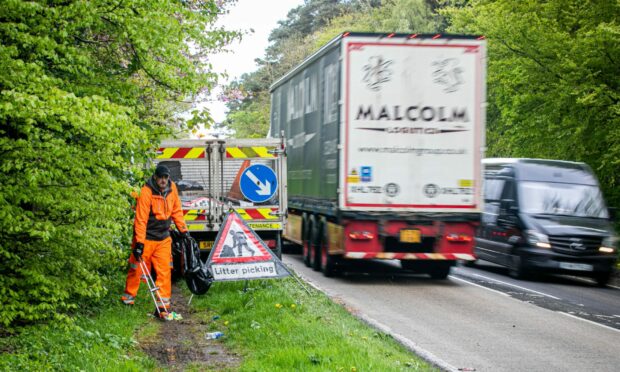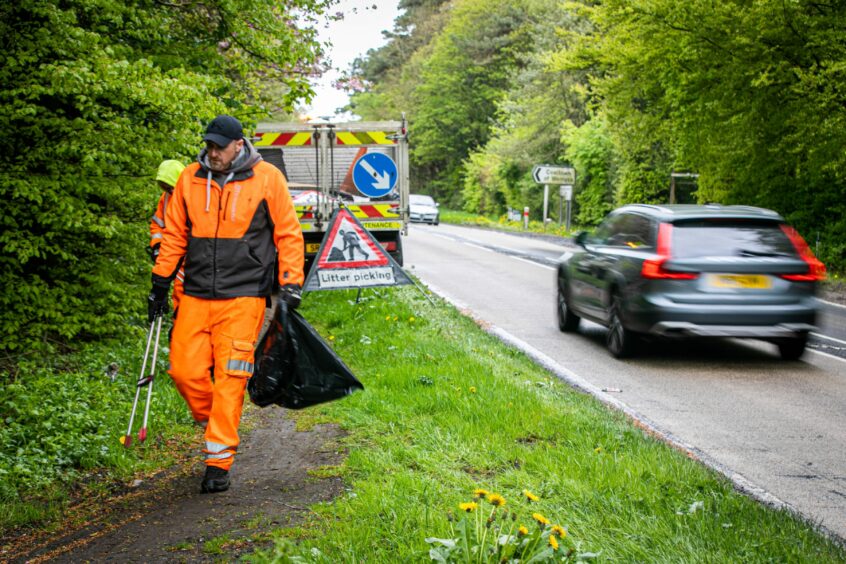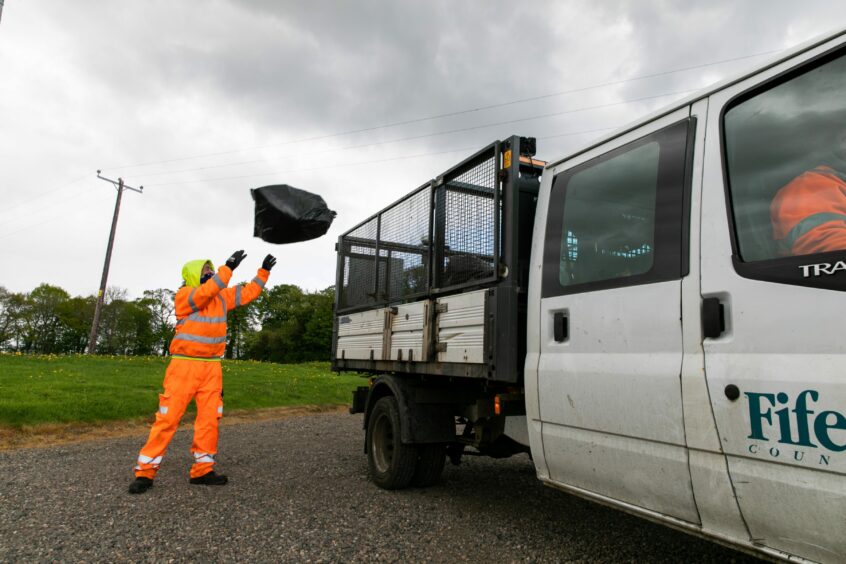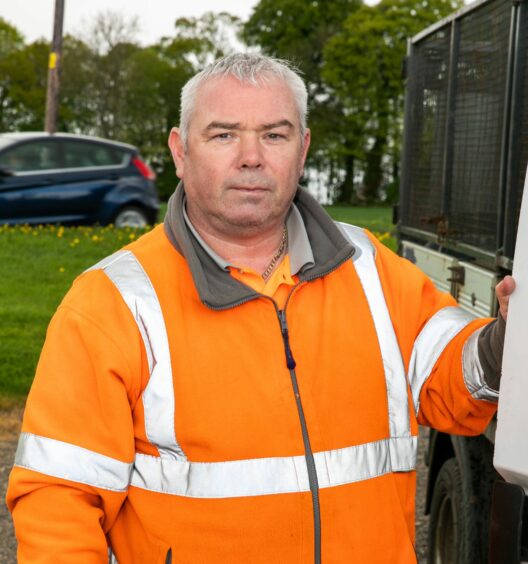Fife workers tackling the scourge of roadside litter have more to worry about than coming across unsavoury discoveries.
We met teams charged with the task of clearing debris from the A915 Standing Stane Road in Fife – a notorious accident blackspot.
Lorries thundered past as workers just feet away tackled the mess with litter pickers.
The previous day, there had been a tragic reminder of the dangers faced by roadside workers.
A man died after being struck by a vehicle as he worked on a grass verge in Dumbarton.
Workers taking their chances on Fife’s most dangerous roads
Sandy Anderson is the council’s service manager for waste operations.
“The Standing Stane is probably one of the most dangerous roads that we do,” he says.
“It’s a real mess that road.”
Infuriatingly, the work could easily be avoided if people changed their behaviour.
“It’s inconsiderate people who, rather than wait until they find a bin, just throw their stuff out the window,” says Sandy.
“We then have to put our workers in a dangerous position to try to clear away that mess.”
The range of rubbish found at the side of the road is an eye-opener to say the least. But more about that later.
Why are people doing this?
The team out clearing the A915 expect to fill the back of their council van with three tonnes of rubbish by the end of a week.
It is the same story along the A92 through Fife, the A911 east of Glenrothes, or almost any road in Scotland.
Sandy suspects it’s a case of out of sight, out of mind when people throw litter on the roadside.
“Once it’s out of the window people forget about it. It’s not like you’re littering your own street or something like that.
“It could be miles from where you live. I don’t think people treat it the same.”
The council works with campaigns including Keep Scotland Beautiful to raise awareness.
Sandy says: “As much we try to educate people, we can’t get through to everyone.”
From sex toys to asbestos – workers have seen it all
It’s quite startling what people throw out their cars, vans and lorries.
Bottles of urine are not an uncommon discovery among the undergrowth alongside Fife’s roads.
Council employees have even found sex toys and underwear.
Dead animals, tyres, household waste and asbestos also feature.
However, the most common roadside litter tends to be empty energy drinks cans and fast food wrappers.
A lot of it could be recycled – if someone bothered to put it in a recycling bin.
“If you throw it out the window onto a verge, it will go in a bag and go to landfill,” says Sandy.
When we caught up with the roadside team, a child’s paddling pool was nestled among the black bags in the back of the van.
There were also bits of cars – a reminder of the accident rate along the stretch.
Just bag it and bin it
Paul Riley is the chargehand leading the clear-up.
He describes the task as like “painting the Forth Bridge”.
“We could start here again on Monday.”
He says the worst spots are where vehicles slow down, such as near roundabouts.
“Everything just goes out the window.
“It’s just a nightmare.”
And he says members of the public can be less than considerate.
“We’ve got folk who will drive past you, see you, shout something at you and then throw something out right behind you.
“And you’ve just cleared that.”
He is urging motorists and their passengers to make use of the region’s 6,000 litter bins when travelling through Fife.
“Just stop. Bag it and bin it. Take it home.”














Conversation